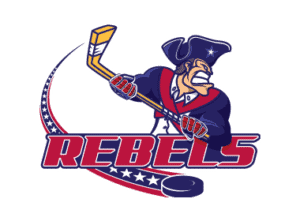For aspiring hockey players, understanding the developmental pathway is crucial to navigate the journey from youth leagues to junior hockey. This pathway provides a structured progression that prepares players for higher levels of competition and potential opportunities in college or professional hockey. This article aims to provide a comprehensive understanding of the hockey development pathway, highlighting key stages and important considerations for players and parents alike.
Foundation:
Youth Hockey and Skill Development: Youth hockey serves as the foundation for a player’s development. During this stage, emphasis is placed on skill acquisition, fundamental hockey concepts, and fostering a love for the game. Players participate in local leagues, learn basic techniques, and develop a strong understanding of teamwork and sportsmanship.
Competitive Youth Hockey:
As players progress, they may move into more competitive youth leagues. These leagues provide enhanced skill development opportunities, increased competition, and structured game play. It is important for players to focus on refining their skills, gaining game experience, and continuing to develop their hockey knowledge.
Select Programs and Travel Teams:
At this stage, players may be invited to join select programs or travel teams. These programs typically involve more intensive training, increased competition, and travel to regional or national tournaments. Joining a select program can provide valuable exposure, heightened competition, and opportunities for player development.
Junior Hockey:
Junior hockey represents the next step in the developmental pathway and serves as a bridge between youth hockey and higher levels of competition. Junior hockey leagues, such as the United States Hockey League (USHL) or Canadian Junior Hockey League (CJHL), offer players the chance to showcase their skills and compete against other talented players. Junior hockey provides an important platform for players to gain exposure to college and professional scouts.
Considerations for Junior Hockey:
When considering junior hockey, players and parents should keep the following factors in mind:
- Research: Thoroughly research different junior hockey leagues and teams to understand the level of competition, coaching staff, player development philosophy, and educational support provided by each program.
- Age and Eligibility: Understand the age requirements, draft processes, and eligibility criteria specific to each junior hockey league. Be aware of any import player rules or restrictions that may apply.
- Academic Balance: Consider how junior hockey will impact academic commitments and explore educational support systems within the program to ensure a well-rounded development.
- Player Development: Assess the developmental opportunities provided by the program, including coaching quality, training facilities, off-ice conditioning, and exposure to higher levels of competition.
College and Professional Opportunities:
For many players, junior hockey serves as a stepping stone to college or professional hockey careers. Junior hockey provides exposure to college scouts and the potential to earn scholarships or invitations to college teams. It is important for players to maintain good academic standing and actively engage in the recruitment process to maximize their opportunities for higher education and future hockey endeavors.
Understanding the hockey development pathway is essential for young players and their parents to make informed decisions and maximize their potential in the sport. From the foundational stages of youth hockey to competitive youth leagues, select programs, and ultimately junior hockey, each stage plays a crucial role in player development and progression. By staying informed, setting goals, seeking opportunities for growth, and maintaining a strong work ethic, young players can navigate the hockey development pathway with confidence and increase their chances of reaching their desired levels of competition. Remember, the journey is as important as the destination, so enjoy the process, embrace challenges, and continue to strive for improvement.












